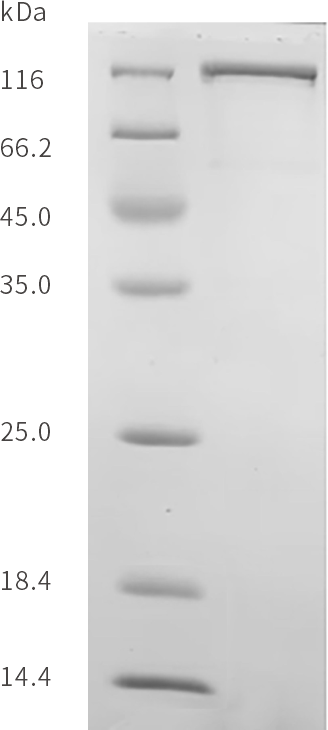RNA-Targeted Precision
Unleash the power of RNA-targeting with CRISPR-Cas13a, a revolutionary tool for diagnostics, therapeutics, and gene editing.
CRISPR-Cas13a is a type of RNA-targeting protein that belongs to the CRISPR-Cas (Clustered Regularly Interspaced Short Palindromic Repeats) family. CRISPR-Cas13a is a recently discovered protein that has shown promise for a variety of applications, including diagnostics, therapeutics, and gene editing.
Function
CRISPR-Cas13a proteins are able to specifically recognize and cleave RNA molecules. This ability is based on the presence of a guide RNA (gRNA) molecule, which is a short RNA sequence that is complementary to the target RNA. The gRNA binds to the CRISPR-Cas13a protein and directs it to the target RNA. Once the target RNA is bound, the CRISPR-Cas13a protein cleaves it into multiple pieces.
Applications
CRISPR-Cas13a proteins have a wide range of potential applications, including:
- Diagnostics: CRISPR-Cas13a proteins can be used to detect RNA viruses, bacteria, and other pathogens. This is because the proteins can be programmed to recognize specific RNA sequences that are unique to the pathogen.
- Therapeutics: CRISPR-Cas13a proteins can be used to treat diseases that are caused by RNA viruses. This is because the proteins can be used to cleave the viral RNA, which can prevent the virus from replicating.
- Gene editing: CRISPR-Cas13a proteins can be used to edit genes in cells. This is because the proteins can be programmed to recognize and cleave specific RNA sequences that are complementary to the target gene.
Advantages
CRISPR-Cas13a proteins have several advantages over other RNA-targeting technologies, including:
- High specificity: CRISPR-Cas13a proteins are highly specific, meaning that they are very unlikely to bind to non-target RNAs.
- High sensitivity: CRISPR-Cas13a proteins are very sensitive, meaning that they can detect very small amounts of target RNA.
- Programmable: CRISPR-Cas13a proteins can be programmed to recognize a wide range of RNA sequences.
Challenges
There are also some challenges associated with the use of CRISPR-Cas13a proteins, including:
- Off-target effects: CRISPR-Cas13a proteins can sometimes cleave non-target RNAs. This is because the proteins can sometimes bind to RNA sequences that are not perfectly complementary to the gRNA.
- Delivery: CRISPR-Cas13a proteins need to be delivered to the cells that they are targeting. This can be a challenge, as the proteins are large and delicate.
Future directions
Despite these challenges, CRISPR-Cas13a proteins are a promising new technology with a wide range of potential applications. Researchers are continuing to develop new ways to use these proteins and to overcome the challenges associated with their use.
Innovative Unveiling: LbuCas13a
Welcome to the forefront of molecular manipulation with LbuCas13a, a powerhouse in the realm of CRISPR-Cas systems. Boasting a single-structure design with two HEPN domains, this 138.5 KDa protein takes the stage as a key player in the type VI CRISPR-Cas system. Its RNA-mediated RNA endonuclease activity makes it a versatile effector with profound implications for RNA tool development and the expansive landscape of CRISPR system applications in gene editing.
Distinctive Attributes:
- Pioneering Functionality: Cas13a emerges as the sole protein within the second-largest class of CRISPR-Cas systems capable of degrading and editing RNA.
Versatile Applications:
- In Vitro Mastery: LbuCas13a showcases its prowess in in vitro RNA cleavage and detection, ushering in a new era of precision.
- Living Cellular Symphony: Navigate the intricacies of RNA regulation and gene editing within living cells, unlocking unprecedented control.
- Illuminating Biological Landscapes: Elevate your experiments with optical probe biological labeling, expanding possibilities beyond the conventional.
Quantifiable Precision:
Delve into the intricate details with SDS-PAGE electrophoresis, offering a visual testament to the purity and precision of LbuCas13a.

Additional Information:
- Storage Conditions: Preserve the efficacy of LbuCas13a by storing at the recommended temperature.
- Quality Assurance: Rigorous quality control measures ensure the consistency and reliability of each unit.
- Research Assistance: Our dedicated support team is poised to assist you on your journey with LbuCas13a, providing expertise and guidance.
Embark on a transformative exploration with LbuCas13a, where innovation meets precision in the dynamic landscape of molecular research.
| Property | Value |
|---|---|
| Product Name | LbuCas13a |
| Source | Recombinant expression in Escherichia coli |
| Catalog Number | CSB-DEM038 |
| Physical Form | Liquid |
| Storage Conditions | -20 ±5°C |
| Molecular Weight | 138.5 kDa |
| Storage Buffer | 20 mM Tris-HCl (pH 7.5), 200 mM NaCl, 20% glycerol, 1 mM DTT |
| Quality Control | No residual exo- and endonucleases |
| Shelf Life | 12 months |
Revolutionizing Molecular Tools: LbuCas13a
Unveil the power of LbuCas13a, a pivotal player in the CRISPR-Cas system. This protein, featuring two HEPN domains, stands as a cohesive single-structure entity with a substantial size of 138.5 kDa. As a distinguished effector protein in the type VI CRISPR-Cas system, Cas13a exhibits remarkable RNA-guided RNA cleavage activity, functioning as an endonuclease system that precisely targets RNA under the guidance of guide RNA.
This versatile protein holds immense value in the realm of molecular research, particularly in the development of RNA tools and the expansive application of CRISPR systems in gene editing. Unlock new possibilities and elevate your experiments with the precision and innovation encapsulated within LbuCas13a.
Product Components
| No. | Component Name | Specifications |
|---|---|---|
| 1 | 10×Cas13 Buffer | 1 mL (for single use) / 5 mL (bulk) |
Explore the potential of LbuCas13a with the meticulously crafted 10×Cas13 Buffer, providing the optimal environment for your CRISPR-Cas experiments. Harness the power of precision and innovation as you venture into the dynamic landscape of molecular tools and gene editing.